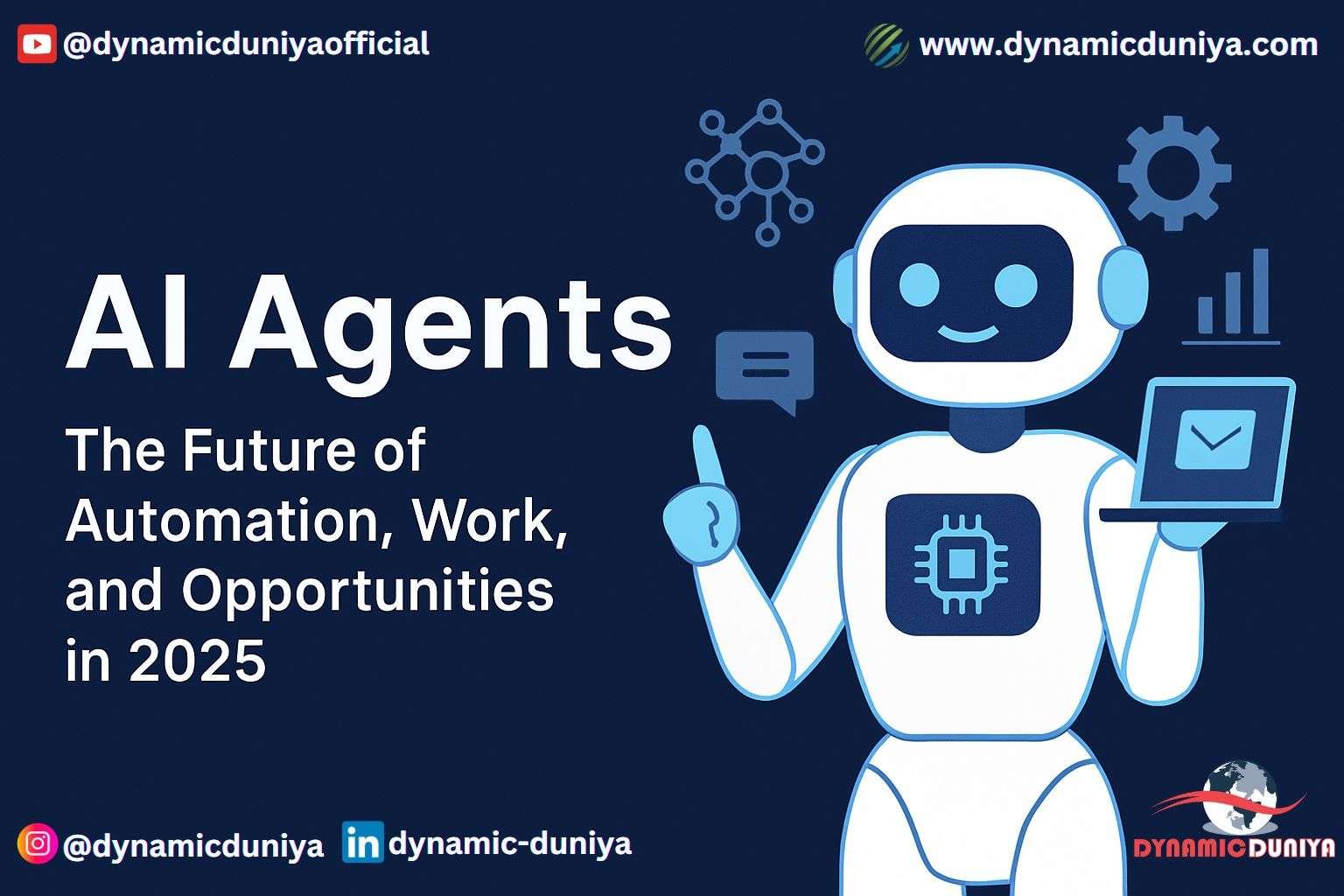The Ultimate Guide to Starting a Career in Computer Vision

Introduction
Computer Vision is an exciting and rapidly growing field of Artificial Intelligence (AI) that enables machines to interpret and understand visual information. From facial recognition and medical imaging to self-driving cars and augmented reality, Computer Vision is transforming industries. But how can a beginner start their journey in this field? Let’s explore everything you need to know to kickstart your career in Computer Vision!
What is Computer Vision?
Computer Vision is a branch of AI that allows computers to extract meaningful insights from images and videos. It mimics human vision but at a much faster and more efficient scale. Some common applications include:
- Facial Recognition – Used in security systems and social media platforms.
- Object Detection – Essential for autonomous vehicles and robotics.
- Medical Image Analysis – Helps in diagnosing diseases from X-rays, MRIs, and CT scans.
- Augmented Reality (AR) & Virtual Reality (VR) – Used in gaming and interactive applications.
- Optical Character Recognition (OCR) – Converts scanned documents into editable text.
Why Choose a Career in Computer Vision?
The demand for Computer Vision engineers and researchers is skyrocketing due to advancements in AI and deep learning. Here are some compelling reasons to pursue a career in this field:
✅ High Demand – Companies like Google, Tesla, Meta, and healthcare organizations need skilled professionals.
✅ Competitive Salaries – A Computer Vision engineer earns an average of $100,000+ per year.
✅ Diverse Applications – It’s used in healthcare, security, automation, entertainment, and beyond.
✅ Future-Proof Career – AI and Computer Vision are shaping the future of technology.
Skills Needed for Computer Vision
To succeed in Computer Vision, you need to develop a combination of technical and theoretical knowledge. Below are the essential skills:
1. Programming Languages 🖥️
- Python (most widely used)
- C++ (used in performance-critical applications)
- MATLAB (for image processing and prototyping)
2. Mathematics & Statistics 📊
- Linear Algebra (vectors, matrices, transformations)
- Calculus (gradient descent, optimization)
- Probability & Statistics (for decision-making models)
3. Machine Learning & Deep Learning 🤖
- Supervised & Unsupervised Learning
- Deep Learning Frameworks (TensorFlow, PyTorch, OpenCV)
- Convolutional Neural Networks (CNNs) for image processing
4. Image Processing Techniques 🏞️
- Filtering (Blurring, Sharpening, Edge Detection)
- Feature Extraction (SIFT, HOG, ORB)
- Image Segmentation & Object Detection
5. Computer Vision Libraries & Tools 🛠️
- OpenCV (most popular for image processing)
- TensorFlow/Keras (for deep learning applications)
- PyTorch (widely used in research and production)
- YOLO (You Only Look Once) (real-time object detection)
- MediaPipe (Google’s real-time face and hand tracking library)
How to Get Started in Computer Vision?
1. Learn the Fundamentals 📚
Start with basic courses in AI, Machine Learning, and Image Processing. Some recommended free resources:
- Coursera – Andrew Ng’s Deep Learning Specialization
- Fast.ai – Practical Deep Learning for Coders
- OpenCV Tutorials – OpenCV’s official documentation
2. Work on Hands-On Projects 🔬
- Applying concepts through real-world projects will enhance your skills. Beginner projects to try:
- Face Detection using OpenCV
- Handwritten Digit Recognition with MNIST Dataset
- Real-time Object Detection using YOLO
- License Plate Recognition System
3. Participate in Online Competitions 🎯
- Competitions improve your problem-solving skills. Try platforms like:
- Kaggle – Offers datasets and Computer Vision challenges
- DrivenData – Focuses on social impact AI competitions
- AIcrowd – Features AI research challenges
4. Contribute to Open Source & Build a Portfolio 🌍
- Share your projects on GitHub.
- Write about your learning experiences on Medium or LinkedIn.
- Contribute to OpenCV or TensorFlow projects.
Career Paths in Computer Vision
Once you gain expertise, you can choose from various career paths:
🔹 Computer Vision Engineer – Works on developing AI models for image recognition.
🔹 AI Research Scientist – Focuses on research and innovation in deep learning.
🔹 Data Scientist with Computer Vision – Uses AI models for predictive analytics.
🔹 Autonomous Vehicle Engineer – Develops self-driving technologies.
🔹 Medical Imaging Specialist – Works on AI-driven diagnostics and analysis.
Conclusion
Computer Vision is a field full of opportunities, and getting started is easier than ever with free resources and online courses. By mastering the right skills, working on projects, and engaging in real-world applications, you can build a successful career in this revolutionary field.
🌟 Are you ready to start your Computer Vision journey? Let us know your thoughts and questions in the comments! 🚀
Random Blogs
- Understanding AI, ML, Data Science, and More: A Beginner's Guide to Choosing Your Career Path
- Ideas for Content of Every niche on Reader’s Demand during COVID-19
- AI Agents & Autonomous Systems – The Future of Self-Driven Intelligence
- Python Challenging Programming Exercises Part 1
- 10 Awesome Data Science Blogs To Check Out
- Grow your business with Facebook Marketing
- The Beginner’s Guide to Normalization and Denormalization in Databases
- String Operations in Python
- Deep Learning (DL): The Core of Modern AI
- How to Start Your Career as a DevOps Engineer
Prepare for Interview
- JavaScript Interview Questions for 5+ Years Experience
- JavaScript Interview Questions for 2–5 Years Experience
- JavaScript Interview Questions for 1–2 Years Experience
- JavaScript Interview Questions for 0–1 Year Experience
- JavaScript Interview Questions For Fresher
- SQL Interview Questions for 5+ Years Experience
- SQL Interview Questions for 2–5 Years Experience
- SQL Interview Questions for 1–2 Years Experience
- SQL Interview Questions for 0–1 Year Experience
- SQL Interview Questions for Freshers
- Design Patterns in Python
Datasets for Machine Learning
- Awesome-ChatGPT-Prompts
- Amazon Product Reviews Dataset
- Ozone Level Detection Dataset
- Bank Transaction Fraud Detection
- YouTube Trending Video Dataset (updated daily)
- Covid-19 Case Surveillance Public Use Dataset
- US Election 2020
- Forest Fires Dataset
- Mobile Robots Dataset
- Safety Helmet Detection
- All Space Missions from 1957
- OSIC Pulmonary Fibrosis Progression Dataset
- Wine Quality Dataset
- Google Audio Dataset
- Iris flower dataset
- Artificial Characters Dataset
- Bitcoin Heist Ransomware Address Dataset






